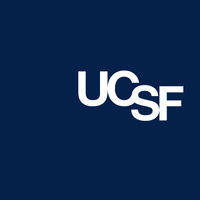预约演示
更新于:2025-05-07
Soft tissue contusion
软组织挫伤
更新于:2025-05-07
基本信息
别名 SOFT TISSUE CONTUSION、Soft tissue contusion、軟部組織挫傷 + [1] |
简介- |
关联
2
项与 软组织挫伤 相关的药物靶点- |
作用机制- |
在研机构 |
原研机构- |
非在研适应症- |
最高研发阶段临床2期 |
首次获批国家/地区- |
首次获批日期1800-01-20 |
靶点- |
作用机制- |
在研机构 |
原研机构 |
非在研适应症- |
最高研发阶段临床1期 |
首次获批国家/地区- |
首次获批日期1800-01-20 |
13
项与 软组织挫伤 相关的临床试验NCT05851430
Galvanize Prospective/Retrospective Pulsed Electric Field Device Registry
The goal of this observational registry is to assess the use and performance of Galvanize PEF technology in a real-world setting. The main questions it aims to answer are:
* PEF utilization and performance
* Monitor safety outcomes and inform future generation devices.
Participants will undergo the PEF procedure and be followed per institutional standard of care.
* PEF utilization and performance
* Monitor safety outcomes and inform future generation devices.
Participants will undergo the PEF procedure and be followed per institutional standard of care.
开始日期2025-05-01 |
申办/合作机构 |
NCT06894745
Positron Emission Tomography (PET) Imaging of the Enhanced Permeability and Retention (EPR) Effect with [89Zr]DFO-starPEG in Patients with Solid Tumors
This is a first-in-human, pilot study of the novel PET-imaging radiotracer [89Zr]DFO-starPEG. The study is designed to obtain preliminary data to support future development of this agent as an imaging surrogate to visualize enhanced permeability and retention (EPR)-mediated tracer uptake before administration of EPR-based nanomedicines.
开始日期2025-04-30 |
申办/合作机构 |
ACTRN12624000721505
The effect of cannabidiol (CBD) on recovery of muscle function, muscle activation and pain following contusion injury in healthy males
开始日期2024-10-01 |
申办/合作机构 |
100 项与 软组织挫伤 相关的临床结果
登录后查看更多信息
100 项与 软组织挫伤 相关的转化医学
登录后查看更多信息
0 项与 软组织挫伤 相关的专利(医药)
登录后查看更多信息
812
项与 软组织挫伤 相关的文献(医药)2025-03-01·Pediatric and Developmental Pathology
Clinical and Pathological Features of a Schwannoma Harboring a
SH3PXD2A::HTRA1
Gene Fusion in a Pre-pubescent Patient
Article
作者: Siddaway, Robert ; Arnoldo, Anthony ; Jakeman, Molly ; Lafreniere, Anthea ; Glembocki, Aida
2025-03-01·Medical & Biological Engineering & Computing
Numerical modeling and analysis of neck injury induced by parachute opening shock
Article
作者: Cheng, Zhiqing ; Voo, Liming ; Zhu, Feng ; Balakrishnan, Krithika ; Lapera, Michael
2025-02-01·BMJ Case Reports
Unilobed rotational flap for traumatic scalp soft tissue loss
Article
作者: Khan, Vakil ; Sridhar, Rachith ; Anwer, Majid ; Hakeem, Abdul
3
项与 软组织挫伤 相关的新闻(医药)2025-03-31
FRANKLIN, TN, USA I March 31, 2025 I
Lynch Regenerative Medicine, LLC., (LRM) announced today that it has acquired exclusive rights to REGRANEX® gel and recombinant purified platelet-derived growth factor (PDGF) from Smith & Nephew, Inc., for use in skin rejuvenation and regeneration as well as other soft tissue wound healing and tissue regeneration applications. PDGF is the first and only pure recombinant growth factor to have received approval from the U.S. Food and Drug Administration (FDA) for the treatment of wounds in the lower extremities of diabetic patients. The terms of the transaction were not disclosed.
The prevalence of diabetes is rising, with an estimated 38.4 million people in the United States, or 11.6% of the population, suffering from diabetes in 2021. Of those patients, 15% are likely to experience a diabetic foot ulcer (DFU). Approximately 85% of diabetes-related lower extremity amputations are preceded by a DFU, and most of these amputations are preventable. REGRANEX is a proven first-line treatment for DFUs when used as an adjunct to good ulcer care. It has been demonstrated in Phase III randomized double-blind placebo-controlled clinical trials to significantly increase healing of DFUs, as compared to a standard good ulcer care. Under the terms of the transaction, Smith & Nephew will continue to distribute REGRANEX through August 2025, after which LRM will become the exclusive manufacturer and seller of REGRANEX.
LRM is working with leading universities and skin care centers in the United States to identify and develop new formulations of recombinant pure PDGF for additional wound healing and skin rejuvenation and regeneration indications beyond DFUs.
“We are excited to acquire the exclusive rights to use recombinant cGMP pure PDGF for soft tissue and wound healing indications. These rights complement our existing broad patent portfolio covering the composition and use of PDGF for skin rejuvenation and regeneration and hair restoration. I have led the development of five pure PDGF products for tissue regeneration and rejuvenation and am confident that we can successfully develop pure PDGF for additional indications in skin and other soft tissue applications,” said Dr. Samuel Lynch, founder and CEO of LRM and inventor on more than 150 patents worldwide and author of more than 100 peer-reviewed articles on PDGF and regenerative medicine.
“PDGF is the most powerful, most important growth factor so far discovered for stimulating healing, tissue regeneration and rejuvenation. Our mission at LRM is to harness the power of PDGF to help patients heal skin and other soft tissue wounds faster and with less scarring, and to rejuvenate the skin to achieve optimum aesthetic results. Our vision is that it becomes best practice for every surgical incision and every injury to skin to be treated with pure PDGF to accelerate healing, reduce inflammation and pain, and decrease the opportunity for wounds to become infected,” added Dr. Lynch.
Recombinant pure PDGF has a strong record of regulatory approval in numerous clinical indications. PDGF has been through multiple phase I – IV clinical trials and has received FDA approval four times – twice as an alternative to autograft in arthrodesis (i.e., surgical fusion procedures) of the ankle (tibiotalar joint) and/or hindfoot (including subtalar, talonavicular, and calcaneocuboid joints, alone or in combination), due to osteoarthritis, posttraumatic arthritis, rheumatoid arthritis, psoriatic arthritis, avascular necrosis, joint instability, joint deformity, congenital defect, or joint arthropathy in patients with preoperative or intraoperative evidence indicating the need for supplemental graft material; once for promoting periodontal regeneration including regeneration of bone and soft tissues lost due to periodontal disease; and once for promoting healing of chronic skin wounds in the lower extremities of diabetic patients.
In addition, LRM, through its wholly owned LRM Aesthetics company, has recently introduced its first commercial product, Ariessence
TM
pure PDGF+, to the aesthetics market, where it is rapidly gaining adoption as the go-to topical product for skin rejuvenation and improved aesthetic results following laser therapy, microneedling and other skin rejuvenation procedures.
About Lynch Regenerative Medicine, LLC
Lynch Regenerative Medicine, LLC., is a commercial stage biotech company pioneering innovative treatments that aim to revolutionize aesthetics and wound care through skin rejuvenation and regeneration, so that patients can rediscover the joy of healthy skin and natural beauty. LRM is advancing the $100 billion aesthetics and wound-care markets by leveraging our regenerative medicine heritage, and our decades-long commitment to safe and effective regenerative products of the highest quality. LRM’s first solution to come to the market, Ariessence
TM
Pure PDGF+
(
www.ariessence.com
)
, is on the market today and can be found in leading innovative med/spa clinics, and other aesthetic focused offices including dermatology and plastic surgery practices. The company was founded in 2023 by Dr. Samuel Lynch and is based in Franklin, Tennessee.
Select Safety Information for REGRANEX® Gel
REGRANEX is the only FDA-approved PDGF indicated for the treatment of lower extremity diabetic neuropathic ulcers that extend into the subcutaneous tissue or beyond and have an adequate blood supply. REGRANEX is indicated as an adjunct to, and not a substitute for, good ulcer care practices.
Limitations of use:
Contraindication: REGRANEX is contraindicated in patients with known neoplasm(s) at the site(s) of application.
Warnings and Precautions: The benefits and risks of treatment should be carefully evaluated before prescribing in patients with known malignancy.
If application site reactions occur, consider the possibility of sensitization or irritation caused by parabens or mcresol. Interrupt treatment and evaluate (e.g. patch testing) as appropriate.
For complete product information, please see the
REGRANEX Full Prescribing Information
.
SOURCE:
Lynch Regenerative Medicine
临床1期临床3期上市批准
2022-06-20
·医脉通
导读这些条款都有可能会被法院认定为无效条款。来源:“医法汇”微信公众号作者:医法汇案情简介患者张女士(29岁)因“外伤后左下肢疼痛4天余”到市医院治疗,门诊收入创伤骨科病房住院治疗,入院诊断为软组织挫伤。入院次日,患者诉左大腿疼痛明显,查体:左大腿肿胀,膝关节活动受限,局部压痛明显。主治医师查房后示:患者系外伤致左大腿疼痛,于外院查MRI提示大腿肌肉拉伤,目前患者疼痛症状明显,予以止痛等对症治疗,嘱患者左下肢制动,绝对卧床休息,必要时行下肢血管超声排除下肢静脉栓塞。入院第3日凌晨3时25分,患者自诉夜间睡眠质量差,要求回家,并在《劝阻住院患者外出告知书》中患者签字栏签名并留下患者联系电话和家属联系电话。《劝阻住院患者外出告知书》载明:“医护人员已告知了离院外出可能发生的风险以及不良后果和需要承担的风险与相关责任,但我们仍然坚持离院外出。因离院行为而导致的任何意外及其一切责任、不良后果均由我们自愿承担”。患者回家后自觉四肢无力,口唇发麻,急拨120于4时20分送至市医院创伤骨科,两小时后患者突发呼吸心跳骤停,神志昏迷,双侧瞳孔散大等,经多科抢救无效死亡。患者死亡当日中午,应家属要求,医患双方封存了病历。后经尸检,患者符合因患病毒性心肌炎致急性心功能衰竭而死亡。患方认为,市医院在患者首次住院诊疗过程中未能查明病因,未能进行有针对性的治疗,且违反医院的规定,违规让患者出院。患者回到医院后也未能尽到急救的义务,从而导致患者死亡,起诉要求市医院赔偿各项损失共计187万余元。法院审理审理过程中,法院应患方申请委托医学会进行医疗损害鉴定,因患方对医方提交的未在双方封存病历中的长期医嘱单、临时医嘱单、死亡记录、死亡病例讨论记录的真实性有异议,医学会退回鉴定。一审法院认为,患者死亡当日,医患双方共同对病历进行了封存,封存的时候市医院并未告知患者家属仍有病历尚未完成需要封存,直至法院委托医学会进行医疗损害鉴定时,仍未要求对长期医嘱单、临时医嘱单、死亡记录、死亡病例讨论记录等病历材料进行封存,本案无法鉴定的法律后果应由市医院承担。患者不顾劝阻执意离开医院,贻误了一定的救治时机,自身亦存在过错。故认定市医院承担70%的赔偿责任,赔偿患方各项损失共计81万余元。市医院不服,提起上诉,二审法院判决驳回上诉,维持原判。法律简析在医疗损害责任纠纷案件中,原则上由患方承担医疗过错过错的举证责任,医疗机构承担赔偿责任的前提是医疗机构或者其医务人员在对患者的诊疗过程中存在过错,并且造成了患者的损害。但是在医疗机构存在违反法律、行政法规、规章以及其他有关诊疗规范的规定;隐匿或者拒绝提供与纠纷有关的病历资料;遗失、伪造、篡改或者违法销毁病历资料等法定情形下,适用过错推定责任原则,可以直接推定医方存在过错,患方无需再举证证明医疗机构或者其医务人员存在过错。发生医疗纠纷后,医疗机构有义务告知患方病历复印、封存的相关规定,需要封存、启封病历资料的,应当在医患双方在场的情况下进行。医方应特别注意对尚未完成的病历进行封存的规定,需要先对已完成病历封存,在病历按照规定完成后,还要对后续完成部分进行再次封存,而且医疗机构应当对封存的病历开列封存清单。本案中,患者死亡当日中午,医患双方就对先行完成的病历进行了封存,但是医方没有对已封存的病历开列封存清单,也没有对后续完成部分死亡记录、死亡病例讨论记录等病历进行封存,在患方对病历真实性提出异议后,医方因违反病历管理制度被法院推定过错。关于住院患者离院的问题。患者办理了住院手续后即与医院建立了医疗服务合同关系,医患双方均应履行相应的合同义务,医疗机构除了对患者进行诊疗外,还负有相应的管理义务。患者住院期间离院,医务人员首先应当充分评估判断患者的病情,先行劝阻,经劝阻无效的患者,应当向其充分告知离院的风险,以及病情突发时的紧急救治方法,并签署《劝阻住院患者外出告知书》。但是在实践中,即使签署此类告知书,也不能完全规避此类法律风险。《中华人民共和国民法典》(以下简称《民法典》)规定,合同中的下列免责条款无效:(一)造成对方人身损害的;(二)因故意或者重大过失造成对方财产损失的。《劝阻住院患者外出告知书》中的类似“本人提出临时出院,离院期间发生的一切情况均与医院无关,后果自负”“患者因临时离院所产生的一切风险、责任,均由患者和家属承担,自愿对此行为负责”等条款,就有可能会被法院认定为无效条款。另外,患者擅自离院,即表示其存在不配合治疗的行为,如果医疗机构严格遵循医疗质量安全核心制度,严格按照患者的护理级别进行定时巡视,发现患者擅自离院后,积极与患方联系,并保留相关证据。一旦患者在离院期间发生意外,医疗机构也可引用《民法典》“患者或者其近亲属不配合医疗机构进行符合诊疗规范的诊疗”的免责条款进行抗辩,以此来规避法律风险。延伸阅读死亡记录,是指经治医师对死亡患者住院期间诊疗和抢救经过的记录,应当在患者死亡后24小时内完成。内容包括入院日期、死亡时间、入院情况、入院诊断、诊疗经过(重点记录病情演变、抢救经过)、死亡原因、死亡诊断等。记录死亡时间应当具体到分钟。死亡病例讨论记录,是指在患者死亡一周内,由科主任或具有副主任医师以上专业技术职务任职资格的医师主持,对死亡病例进行讨论、分析的记录。内容包括讨论日期、主持人及参加人员姓名、专业技术职务、具体讨论意见及主持人小结意见、记录者的签名等。(本文系医法汇原创,根据真实案例改编,为保护当事人隐私均采用化名)责编|苏沐封面图来源|视觉中国精彩回顾➤ 肠梗阻婴儿发热被送方舱后死亡?一级甲等医疗事故,医院负次要责任合理吗?➤ 河南多家银行储户被强行“红码”!到底是谁在“精准”管控他们的健康码?➤ 重磅!国家卫健委首次发布猴痘诊疗指南➤ 上海高校投异物男生被开除学籍!| 医脉3分钟☟戳这里,更有料!
专利无效
2022-06-20
作者:医法汇
转载请注明来源:医法汇
案情简介
患者张女士(29岁)因“外伤后左下肢疼痛4天余”到市医院治疗,门诊收入创伤骨科病房住院治疗,入院诊断为软组织挫伤。
入院次日,患者诉左大腿疼痛明显,查体:左大腿肿胀,膝关节活动受限,局部压痛明显。主治医师查房后示:患者系外伤致左大腿疼痛,于外院查MRI提示大腿肌肉拉伤,目前患者疼痛症状明显,予以止痛等对症治疗,嘱患者左下肢制动,绝对卧床休息,必要时行下肢血管超声排除下肢静脉栓塞。
入院第3日凌晨3时25分,患者自诉夜间睡眠质量差,要求回家,并在《劝阻住院患者外出告知书》中患者签字栏签名并留下患者联系电话和家属联系电话。《劝阻住院患者外出告知书》载明:“医护人员已告知了离院外出可能发生的风险以及不良后果和需要承担的风险与相关责任,但我们仍然坚持离院外出。因离院行为而导致的任何意外及其一切责任、不良后果均由我们自愿承担”。
患者回家后自觉四肢无力,口唇发麻,急拨120于4时20分送至市医院创伤骨科,两小时后患者突发呼吸心跳骤停,神志昏迷,双侧瞳孔散大等,经多科抢救无效死亡。患者死亡当日中午,应家属要求,医患双方封存了病历。后经尸检,患者符合因患病毒性心肌炎致急性心功能衰竭而死亡。
患方认为,市医院在患者首次住院诊疗过程中未能查明病因,未能进行有针对性的治疗,且违反医院的规定,违规让患者出院。患者回到医院后也未能尽到急救的义务,从而导致患者死亡,起诉要求市医院赔偿各项损失共计187万余元。
法院审理
审理过程中,法院应患方申请委托医学会进行医疗损害鉴定,因患方对医方提交的未在双方封存病历中的长期医嘱单、临时医嘱单、死亡记录、死亡病例讨论记录的真实性有异议,医学会退回鉴定。
一审法院认为,患者死亡当日,医患双方共同对病历进行了封存,封存的时候市医院并未告知患者家属仍有病历尚未完成需要封存,直至法院委托医学会进行医疗损害鉴定时,仍未要求对长期医嘱单、临时医嘱单、死亡记录、死亡病例讨论记录等病历材料进行封存,本案无法鉴定的法律后果应由市医院承担。患者不顾劝阻执意离开医院,贻误了一定的救治时机,自身亦存在过错。故认定市医院承担70%的赔偿责任,赔偿患方各项损失共计81万余元。
市医院不服,提起上诉,二审法院判决驳回上诉,维持原判。
法律简析
在医疗损害责任纠纷案件中,原则上由患方承担医疗过错过错的举证责任,医疗机构承担赔偿责任的前提是医疗机构或者其医务人员在对患者的诊疗过程中存在过错,并且造成了患者的损害。但是在医疗机构存在违反法律、行政法规、规章以及其他有关诊疗规范的规定;隐匿或者拒绝提供与纠纷有关的病历资料;遗失、伪造、篡改或者违法销毁病历资料等法定情形下,适用过错推定责任原则,可以直接推定医方存在过错,患方无需再举证证明医疗机构或者其医务人员存在过错。
发生医疗纠纷后,医疗机构有义务告知患方病历复印、封存的相关规定,需要封存、启封病历资料的,应当在医患双方在场的情况下进行。医方应特别注意对尚未完成的病历进行封存的规定,需要先对已完成病历封存,在病历按照规定完成后,还要对后续完成部分进行再次封存,而且医疗机构应当对封存的病历开列封存清单。本案中,患者死亡当日中午,医患双方就对先行完成的病历进行了封存,但是医方没有对已封存的病历开列封存清单,也没有对后续完成部分死亡记录、死亡病例讨论记录等病历进行封存,在患方对病历真实性提出异议后,医方因违反病历管理制度被法院推定过错。
关于住院患者离院的问题。患者办理了住院手续后即与医院建立了医疗服务合同关系,医患双方均应履行相应的合同义务,医疗机构除了对患者进行诊疗外,还负有相应的管理义务。
患者住院期间离院,医务人员首先应当充分评估判断患者的病情,先行劝阻,经劝阻无效的患者,应当向其充分告知离院的风险,以及病情突发时的紧急救治方法,并签署《劝阻住院患者外出告知书》。但是在实践中,即使签署此类告知书,也不能完全规避此类法律风险。《中华人民共和国民法典》(以下简称《民法典》)规定,合同中的下列免责条款无效:(一)造成对方人身损害的;(二)因故意或者重大过失造成对方财产损失的。《劝阻住院患者外出告知书》中的类似“本人提出临时出院,离院期间发生的一切情况均与医院无关,后果自负”“患者因临时离院所产生的一切风险、责任,均由患者和家属承担,自愿对此行为负责”等条款,就有可能会被法院认定为无效条款。
另外,患者擅自离院,即表示其存在不配合治疗的行为,如果医疗机构严格遵循医疗质量安全核心制度,严格按照患者的护理级别进行定时巡视,发现患者擅自离院后,积极与患方联系,并保留相关证据。一旦患者在离院期间发生意外,医疗机构也可引用《民法典》“患者或者其近亲属不配合医疗机构进行符合诊疗规范的诊疗”的免责条款进行抗辩,以此来规避法律风险。
延伸阅读:
死亡记录,是指经治医师对死亡患者住院期间诊疗和抢救经过的记录,应当在患者死亡后24小时内完成。内容包括入院日期、死亡时间、入院情况、入院诊断、诊疗经过(重点记录病情演变、抢救经过)、死亡原因、死亡诊断等。记录死亡时间应当具体到分钟。
死亡病例讨论记录,是指在患者死亡一周内,由科主任或具有副主任医师以上专业技术职务任职资格的医师主持,对死亡病例进行讨论、分析的记录。内容包括讨论日期、主持人及参加人员姓名、专业技术职务、具体讨论意见及主持人小结意见、记录者的签名等。
(本文系医法汇原创,根据真实案例改编,为保护当事人隐私均采用化名)
专利无效
分析
对领域进行一次全面的分析。
登录
或

Eureka LS:
全新生物医药AI Agent 覆盖科研全链路,让突破性发现快人一步
立即开始免费试用!
智慧芽新药情报库是智慧芽专为生命科学人士构建的基于AI的创新药情报平台,助您全方位提升您的研发与决策效率。
立即开始数据试用!
智慧芽新药库数据也通过智慧芽数据服务平台,以API或者数据包形式对外开放,助您更加充分利用智慧芽新药情报信息。
生物序列数据库
生物药研发创新
免费使用
化学结构数据库
小分子化药研发创新
免费使用


